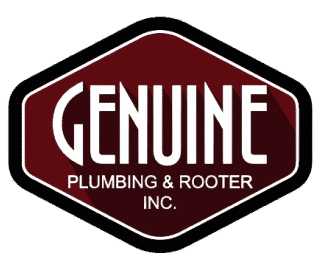A well-maintained plumbing system is essential for the long-term comfort, health, and safety of your home, while also helping you avoid costly repairs and disruptions. Regular maintenance tasks can enhance the efficiency of your plumbing system, extend its lifespan, and keep issues at bay. In this step-by-step checklist, we will provide readers with a practical guide to routine plumbing maintenance tasks that can make a significant difference in the overall health and longevity of their plumbing system.
Whether you’re a homeowner tackling maintenance yourself or working with a professional plumber, our comprehensive checklist will help you safeguard your home’s plumbing and ensure that it continues to function at peak performance. Ready to invest in your home’s comfort and long-term stability? Let’s dive into this essential plumbing maintenance checklist.
Step 1: Inspect for Leaks Regularly
One of the simplest yet most impactful tasks on your plumbing maintenance checklist should be checking for leaks. A small leak, if left unaddressed, can lead to significant water damage, mold growth, and increased water bills. Inspect all pipes, faucets, and fixtures in your home for any signs of leaking, such as water stains, mold, or a musty odor. Keep an eye on your water meter and billing statements as sudden spikes in usage may indicate a hidden leak.
Step 2: Clean and Maintain Drains
Clogged drains can lead to slow draining sinks, showers, and potential water damage if left untreated. One of the best maintenance practices for your plumbing system is to clean your drains regularly. Remove any debris, such as hair and soap scum in the bathroom and food particles in the kitchen, from sink and tub drains using a drain snake or plunger. Consider using a drain strainer to prevent foreign objects from entering your drains. Regularly flush your drains with hot water to help dissolve any accumulated grease or grime. Avoid pouring grease, oil, or harsh chemicals down your drains, as they can contribute to clogs and damage your pipes.
Step 3: Check Water Pressure and Adjust if Necessary
High water pressure can put unnecessary stress on your plumbing system, leading to leaks, damage, and decreased efficiency. Use a water pressure gauge to check your home’s water pressure – ideally, it should be between 40 and 60 psi (pounds per square inch). If your water pressure is consistently higher, consider installing a pressure-reducing valve to regulate and maintain the recommended pressure.
Step 4: Insulate Pipes in Unheated Spaces
Pipes in unheated spaces, such as basements, crawlspaces, and garages, are at risk of freezing and bursting, which can cause extensive water damage and costly repairs. Insulating these pipes can prevent freezing while also increasing energy efficiency and reducing heat loss. Use pipe insulation, such as foam sleeves, to protect your pipes and keep them safe from frigid temperatures.
Step 5: Test Your Water Heater’s Pressure Relief Valve
The pressure relief valve is an important safety feature on your water heater, as it prevents excessive pressure and potential explosion due to overheating. Regularly testing this valve can ensure proper function and prolong the life of your water heater. To test the valve, turn off the power and gas supply, place a bucket beneath the valve, and carefully lift the valve lever. Water should flow out of the valve, and then stop when you release the lever. If you notice leaks or inconsistent water flow, it’s time to replace the valve.
Step 6: Flush Your Water Heater
Sediment buildup in your water heater can reduce efficiency, cause corrosion, and even lead to premature failure. Flushing your water heater at least once a year can prevent sediment accumulation and extend the life of your unit. Turn off the power and gas supply, connect a garden hose to the drain valve, open the pressure relief valve, and then open the drain valve, allowing the water to flow out until it runs clear.
Step 7: Inspect Your Septic System
Maintaining your septic system is essential to prevent costly repairs and potential environmental harm. Schedule regular inspections by a professional, and have your septic tank pumped every three to five years, depending on usage and household size. Be mindful of what you flush into your septic system – avoid flushing non-biodegradable items, such as wipes, diapers, and feminine hygiene products.
Step 8: Check Outdoor Faucets and Irrigation Systems
Outdoor plumbing systems are just as important to maintain as those indoors. Inspect outdoor faucets and irrigation systems for leaks, damage, or signs of wear. Ensure your sprinkler heads are properly functioning, not obstructed by overgrown grass, and not spraying water onto your home’s foundations or walls, as this can lead to costly water damage. Before winter arrives, disconnect garden hoses and shut off the water supply to your outdoor faucets to prevent freezing.
Step 9: Schedule Professional Inspections
While regular DIY maintenance is crucial, it’s always a good idea to have your plumbing system inspected by a professional plumber annually. They can identify any potential issues, perform maintenance tasks you may have missed or aren’t equipped to handle, and provide valuable recommendations to keep your plumbing system in optimal condition.
By diligently following these steps and tackling them in a timely manner, you can significantly extend the life of your plumbing system and avoid costly repairs. This comprehensive plumbing maintenance checklist can serve as your guide to ensuring your home benefits from a properly functioning and well-maintained plumbing system.
Partner with Genuine Plumbing and Rooter for Expert Plumbing Maintenance
Adhering to this step-by-step plumbing maintenance checklist can significantly benefit the longevity and efficiency of your home’s plumbing system, saving you money in the long run and preventing stressful emergencies. By taking a proactive approach to maintaining your plumbing system, you’re investing in the comfort and value of your home.
For top-notch professional assistance with your plumbing maintenance needs, trust Genuine Plumbing and Rooter. Our experienced and dedicated team is committed to providing exceptional service and expert guidance to homeowners in Ventura County, California. Don’t let plumbing issues disrupt your day-to-day life – contact Genuine Plumbing and Rooter today to schedule a comprehensive plumbing inspection and ensure the smooth functioning of your home’s plumbing system.



















